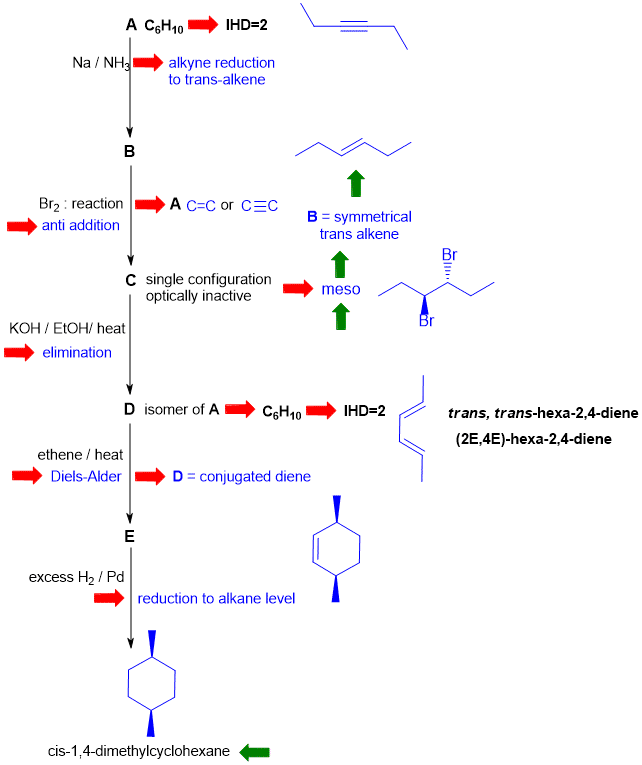
Part 7: STRUCTURE DETERMINATION
Note that these types of questions are often the most difficult on the examination. This is because they are holistic in that they require a good understanding of the reactions and the concepts and the ability to apply those concepts. They can't be memorised, they require understanding and ability to apply. Hence they help discriminate those who truly understand from those who have memorised and will soon forget. They are like a good Sudoku, no need to guess. Once you find the key, you can work it out logically.
A schematic of the solution is shown below. The information from the question is given in black. Deductions directly from this information are given in red. Points that provide potential key information are shown in green which leads to the structures.
The logical thought pathway would be based on identifying C from the stereochemical information or D from recognising the Diels-Alder reaction product E. There maybe, of course, other possible thought pathways or factors that can help complete the solve (rather than brute force guessing).

Common mistakes:
A: Incorrect functional group (e.g. either a cyclic alkene or a diene instead of the alkyne indicated by the Na / NH3 reduction) but the correct MF
B: Incorrect functional group (over-reduction to an alkane instead of the alkene), or the alkene was in the wrong position.
C: Incorrect stereochemistry, or stereochemistry not shown
D: Incorrect stereochemistry of the diene
E: Did not indicate the stated cis stereochemistry.
IUPAC name: Forgot to denote the stereochemistry of the dienes
Overall, it seems like stereochemistry is an issue = review / remember to indicate in their structures.